White or Green Asparagus: What Sets Them Apart
White and green asparagus varieties might look completely different on your plate, yet they come from the same plant species.
The main distinction lies in growing methods – farmers cover white asparagus with soil to prevent sunlight exposure, while green asparagus grows freely under the sun.
This cultivation difference affects not only color but also flavor profiles, with white offering subtle, delicate notes compared to green's more robust, grassy taste.
Many European countries, especially Germany, celebrate white asparagus with dedicated festivals during spring harvest season.
The nutritional content varies slightly between these two types, though both provide excellent health benefits.
Texture differences make each type suitable for different recipes, from creamy soups to grilled sides.
Read on to learn which asparagus type might become your new favorite for upcoming meals.
Understanding The Overview of White and Green Asparagus
Asparagus officinalis, a lily family herbaceous plant, features long stems with rose-shaped tiny leaves at one end, harvested as spring vegetables.
White and green asparagus are two popular varieties of the same vegetable.
Many people recognize white asparagus throughout Europe and Western Asia, distinguished by its pale color from blanching techniques during cultivation.
This delicate, slightly bitter vegetable earns nicknames like "white gold" and "edible ivory" due to its unique qualities.
On the other hand, Europeans generally prefer white asparagus, while Americans favor the green type, which appears seasonally from late April through June.
Green asparagus thrives in temperate and cooler areas with long winters, requiring patience as plants need 2-3 years to establish before producing for decades afterward.
White vs Green Asparagus: What Sets Them Apart
Growing asparagus offers a wonderful choice between green and white varieties, which differ in several important ways.
| Feature | White Asparagus | Green Asparagus |
| Color | White, no chlorophyll pigment | Green due to chlorophyll pigment |
| Appearance | Peeled white asparagus resembles scallions | Typical green stalk with green skin |
| Taste | Delicate, slightly sweet, somewhat bitter | Grassy, nutty, heartier and earthier flavor |
| Peeling | Requires peeling due to thick fibrous layer | Peeling optional, mainly trimming the ends |
| Cooking Time | Longer cooking time due to thickness and texture | Shorter cooking time, cooks to tender quickly |
| Cooking Methods | Steaming, boiling, roasting, grilling | Grilling, roasting, steaming, sautéing |
| Shelf Life | 3–4 days fresh; 10-14 days refrigerated in water jar | 3–4 days fresh; 5–7 days refrigerated wrapped moist |
| Health Benefits | Rich in fiber, calcium, vitamin K, low calories | Richer in antioxidants and vitamins, fiber, calcium |
| Price | More expensive due to labor-intensive growth and short season | More affordable and widely available |
| Popularity/Availability | Mostly grown and consumed in Europe | Widely grown globally; more popular in the U.S. |
Colors
White asparagus is distinguished by its pale, white color, which results from the absence of chlorophyll, the green pigment found in most plants. This lack of chlorophyll occurs because white asparagus is grown underground without exposure to sunlight.
In contrast, green asparagus develops its characteristic vibrant green color due to the presence of chlorophyll, which is produced when the plant grows above ground and is exposed to sunlight.
Appearance
Once peeled, white asparagus resembles scallions or green onions with a smooth, pale exterior. Its thick outer layer is fibrous and requires removal before cooking.
Green asparagus, on the other hand, has a typical green stalk with a fresh, natural skin that is usually thinner and less fibrous. Its appearance is more familiar to most people and often includes a pointed tip.
Taste
White asparagus has a delicate flavor profile, often described as slightly sweet with a hint of bitterness. Its taste is milder compared to green asparagus and is often paired with rich sauces like hollandaise or mayonnaise to enhance its subtle flavor.
Green asparagus has a more pronounced taste, characterized by grassy and nutty notes. It offers a heartier and earthier flavor that stands well on its own or in a variety of dishes.
Peeling
Due to its thick, fibrous outer layer, white asparagus always requires peeling before cooking to ensure tenderness. This step is crucial for removing the tough exterior that can detract from its texture.
Green asparagus generally does not require peeling; instead, it usually only needs the woody ends trimmed. However, very thick green asparagus stalks may sometimes benefit from light peeling for improved texture.
Cooking Time
White asparagus typically requires a longer cooking time because of its greater thickness and firmer texture. It is best cooked gently to preserve its delicate flavor and avoid becoming mushy.
In contrast, green asparagus cooks relatively quickly, becoming tender in a short amount of time, making it convenient for fast meals and quick preparation methods.
Cooking Methods
White and green asparagus share similar cooking methods despite their differences. Five main techniques work for both varieties, plus several other tasty options exist.
Thin stalks shine when sauteed, added to savory tarts, or included in stir-fries, while thick stalks perform better when grilled or roasted. Beyond these core approaches, many home cooks enjoy baking asparagus, shaving it raw into fresh salads, or trying other creative preparations.
The right cooking method often depends on the thickness of your spears rather than their color, so matching the technique to what's in your kitchen leads to the best results.
Shelf Life
The shelf life of white and green asparagus is quite similar when stored properly. Fresh asparagus typically lasts 3 to 4 days at room temperature.
When refrigerated, white asparagus stored upright in a jar with water can stay fresh for 10 to 14 days. Green asparagus usually keeps well for 5 to 7 days when wrapped in a moist paper towel and refrigerated.
Proper storage is key to maintaining freshness for both.
Health Benefits
White asparagus is a nutritious vegetable rich in dietary fiber, calcium, vitamin K, and low in calories, making it a good choice for weight management and bone health. Green asparagus offers similar benefits but contains higher levels of antioxidants, including vitamin E and flavonoids, which help combat oxidative stress.
Both varieties support cardiovascular health and provide essential nutrients for overall well-being.
Price
White asparagus tends to be more expensive than green asparagus due to the labor-intensive process required to grow it without sunlight. Its shorter harvest season and careful cultivation add to the cost.
Green asparagus is more widely available and generally more affordable, as it grows more easily and is produced on a larger scale globally.
Popularity and Availability
White asparagus is predominantly grown and consumed in European countries such as Germany, France, and the Netherlands, where it is considered a delicacy. It is less common in other parts of the world due to its specialized growing conditions.
Green asparagus, however, is widely cultivated across the globe, especially popular in the United States, and is more commonly found in grocery stores year-round.
How to Clean White and Green Asparagus like A Pro
Cleaning white and green asparagus properly ensures the best texture and flavor when cookin
For white asparagus, start by rinsing the stalks under cold water to remove dirt. Since white asparagus has a thick, tough outer layer, use a vegetable peeler to peel from just below the tip down to the base, removing the fibrous skin.
Also, trim the woody ends before cooking.
For green asparagus, rinse thoroughly to wash away any grit.
Usually, peeling isn’t necessary because its skin is thinner and more tender, but trimming the tough, woody ends is essential. For thicker stalks, you can lightly peel the lower part if desired.
Proper cleaning helps achieve tender, delicious asparagus ready for any recipe.
Delicious White Asparagus Dishes to Make
Check out these white asparagus recipes and try to make them this weekend. They'll not let you down.
White Asparagus Cream Soup
Germans adore white asparagus soup during spring when this pale veggie shines on menus everywhere. Making this light soup requires just a few steps - simply chop the asparagus into small chunks and simmer them in buttery liquid until tender.
Since the soup has such a delicate taste, go easy on seasonings like salt and lemon or they'll completely take over. The mild creaminess makes it perfect for both casual family meals and dinners with company, letting the natural sweetness of this special vegetable truly stand out.
Delicious White Asparagus Dishes That’ll Win Every Heart
Check out these white asparagus recipes and try to make them this weekend. They'll not let you down.
White Asparagus And Crab Salad
White asparagus brings a gentle tenderness that mixes perfectly with various salads, making it an excellent Easter pairing with crab. Its subtle taste stands out as the main flavor in this dish, while other components are kept simple to maintain their natural freshness.
This approach helps avoid too much seasoning that might overpower the delicate balance of flavors in your meal. By preparing each ingredient with minimal fuss, you get to enjoy the pure taste of spring on your plate during holiday gatherings.
White Asparagus With Shrimp Salad
White asparagus pairs wonderfully with shrimp salad for a truly delicious combination. Gray shrimp, also called brown shrimp, works especially well in this tasty dish.
These small crustaceans bring their natural salty-sweet flavor that perfectly complements the subtle taste of white asparagus. Together, these ingredients create an impressive meal that's sure to please anyone at your table.
The contrast between the tender asparagus and the firm texture of the shrimp makes each bite interesting and satisfying.
Home-Cooked Green Asparagus Recipes
Those green spears add a pop of color, a touch of earthy flavor, and loads of nutrients to any meal. Here are ideal ideas to make at home.
Foil Pack Grilled Salmon With Lemony Asparagus
Preparing salmon in a foil pack on the grill gives it amazing taste and stops fish from getting stuck. All you need is fresh salmon, some asparagus spears, lemon slices, and a pat of butter wrapped together in aluminum foil.
This simple method locks in moisture while infusing the fish with delicious flavors as everything cooks together. Your dinner guests will love how the tangy citrus complements the rich salmon and tender veggies.
Plus, clean-up is super easy since nothing touches the grill grates directly. Making these packs works well for casual family meals or when you want to impress someone special with minimal effort.
Asparagus Ham And Cheese Puff Pastry Bundles
Surely, this dish delivers an unforgettable taste that fits perfectly with any meal throughout your day. Making small adjustments to match what's in your kitchen keeps the recipe flexible and personal.
Each ingredient can come from your favorite brand or be homemade, which not only preserves the amazing flavor but also adds your own special touch to the final result. The beauty of cooking lies in these little customizations that turn a standard recipe into something uniquely yours.
Air Fryer Asparagus
Fresh green asparagus makes a quick, simple dish that comes together in under 15 minutes when cooked in an air fryer. This fast option works perfectly for busy weeknights when you need something healthy without much fuss.
Vegetarians can enjoy this tasty side as is, while others might pair it with their favorite protein for a complete meal. All you need is some asparagus spears and your trusty air fryer to create this easy veggie dish that packs both flavor and nutrition with minimal effort.
Tips to Buy Perfect Asparagus
Choosing asparagus with these qualities will ensure better taste and texture.
Got Questions? We’ve Got Solutions
1. Where do white and green asparagus come from?
White and green asparagus are actually the same plant! White asparagus grows underground without sunlight exposure, while green asparagus grows above ground and develops chlorophyll from sunlight.
2. Does white asparagus taste different from green?
White asparagus has a milder, slightly sweeter and more delicate flavor compared to green asparagus, which tends to have a stronger, grassier taste.
3. Is one healthier than the other?
Green asparagus contains more vitamins and antioxidants due to its chlorophyll content, but white asparagus has slightly more fiber. Both are nutritious, low-calorie vegetables.
4. Do they require different cooking methods?
White asparagus has a tougher outer skin and needs more peeling and longer cooking time (8-10 minutes) than green asparagus (5-7 minutes).

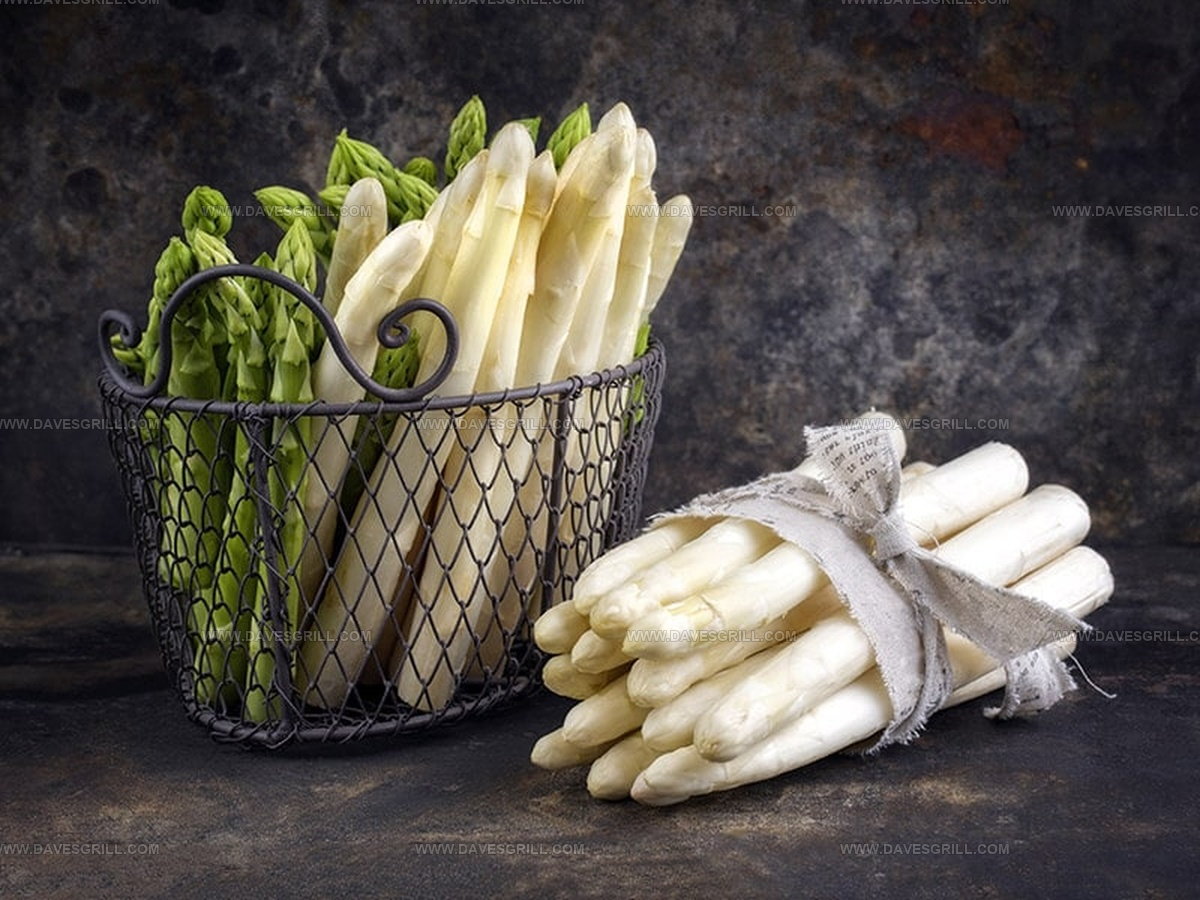
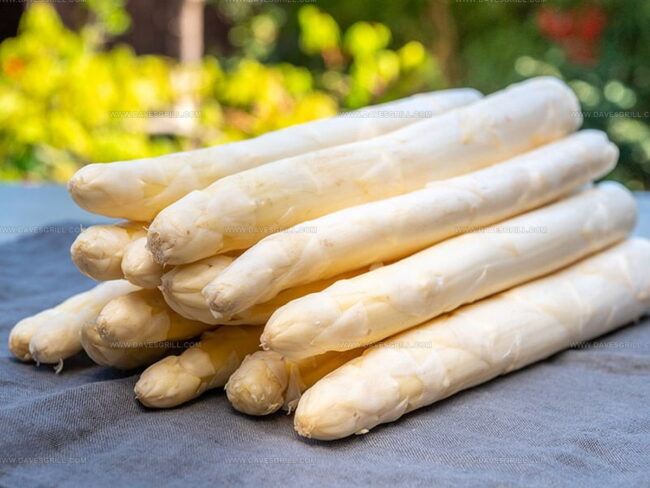
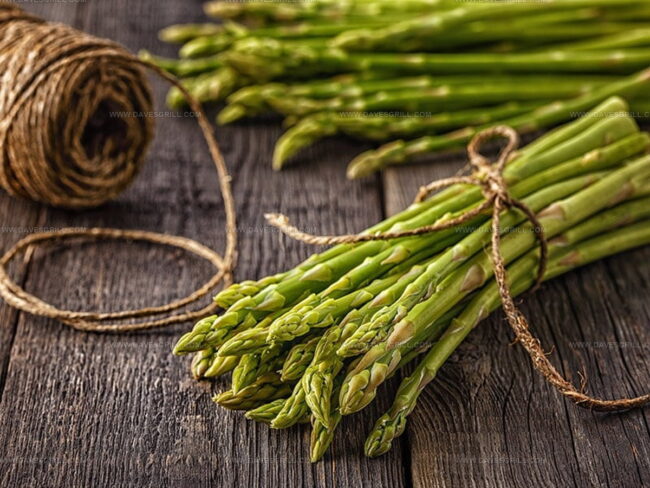
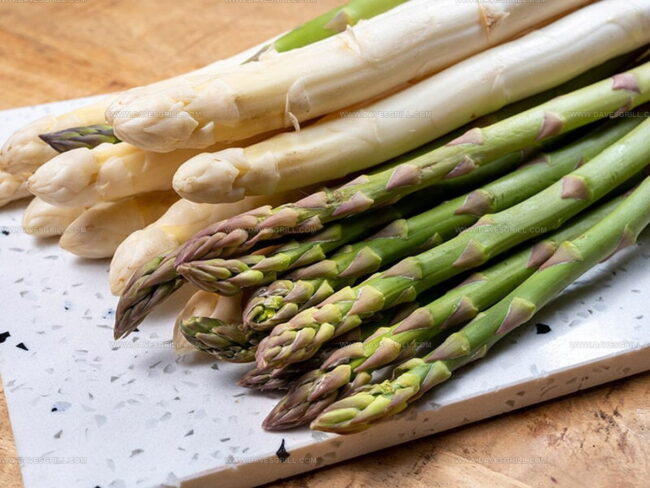
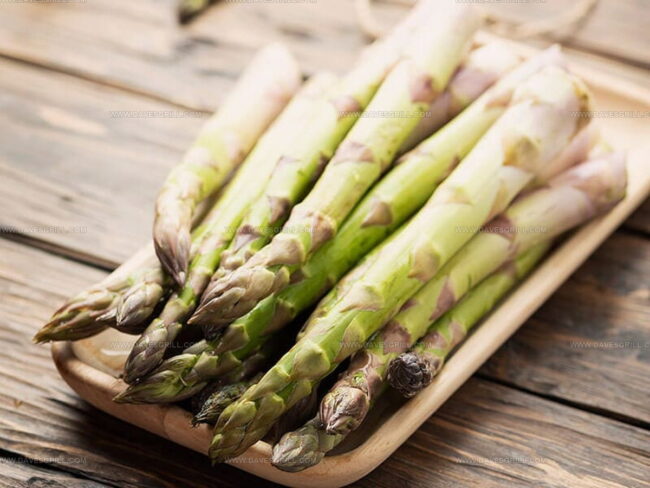
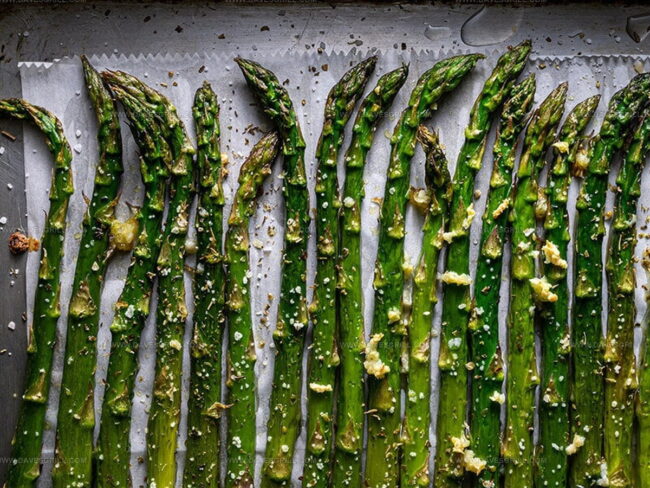
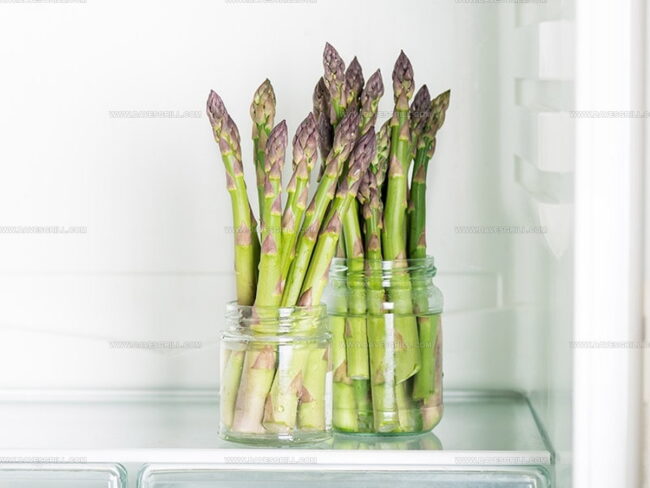
Emily Lawson
Content Creator & Culinary Specialist
Expertise
Education
Oregon Culinary Institute
Diploma in Culinary Arts
Focus: Emphasis on farm-to-table cooking, sustainable practices, and the fusion of global flavors with traditional grilling methods.
Emily Lawson is the content creator at Daves Grill, turning tasty ideas into clear, easy recipes. Based in Portland, she trained at the Oregon Culinary Institute and loves cooking with fresh, seasonal ingredients, especially grilled veggies and global flavors.
Emily mixes food writing with hands-on cooking to bring you recipes that feel fun, not stressful. Her goal is to make every dish simple, flavorful, and worth coming back to. Together, she and Dave serve up real food, one recipe at a time.